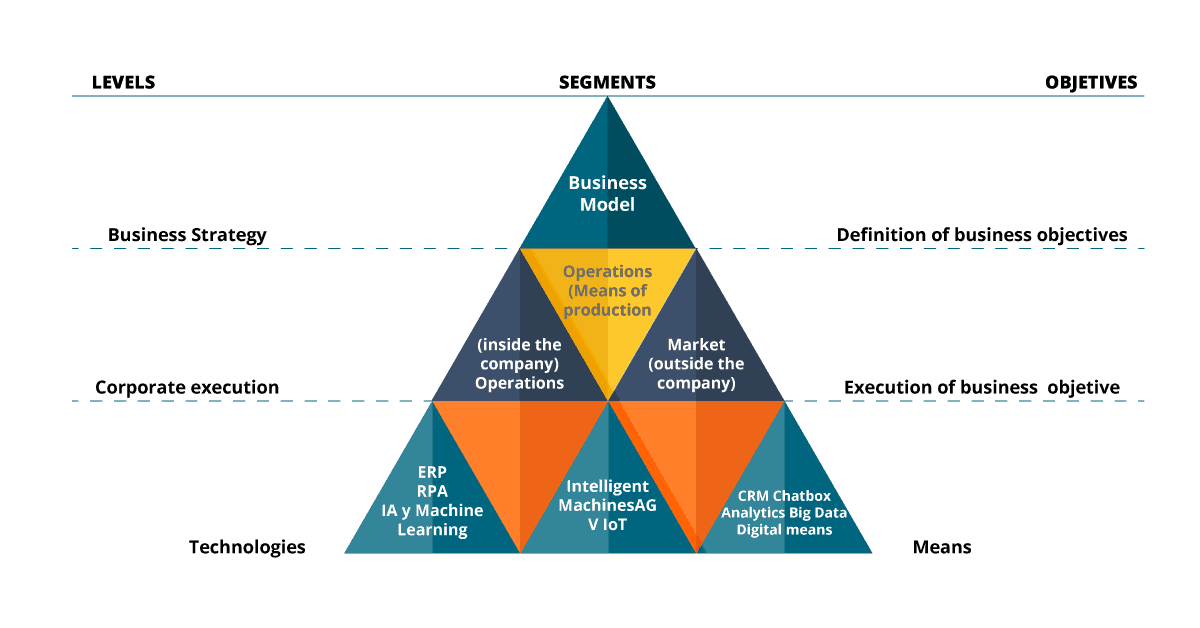How many times have we heard about digital transformation? It has been so frequently repeated that the idea behind got lost in generic recommendations to achieve it.
In consequence, people in charge of digital transformation bump with a wall of resistance, and little has to do with the process of implementing it as such. In other words, resistance is more related to the need, means, and methods of selection than the adoption itself.
This fact throws an interesting light on our purposes and expectations towards digital transformation. At the same time, it warns us and shows how much myths have permeated digital transformation to make it harder.
So, it is time to take advantage of what light the look shows us to carefully see what it means to carry out the digital transformation projects of your company; and the premises that you must take care of to integrate them under your own rules and rhythms.
Digital transformation
What do we think about when we talk about digital transformation? Usually, when this concept or need comes up; the first mental image that comes to us is updating tools and/or devices that give us competitive advantages in our market.
There are also people who go a step further; and associate digital transformation with the need to adopt technological solutions to help us make it more efficient for our service – and our customers – through automation.
Such visions are perfectly valid. However, and bringing again the term’s background; it is necessary to reconsider what it means for your company and what it represents for your business operations. Let’s see some approaches and tips to achieve it.
Approaches to Digital Transformation
 So, considering that digital transformation encompasses as many aspects as specific needs; your options range from the simplest to the most complex in terms of adopting new technological proposals.
So, considering that digital transformation encompasses as many aspects as specific needs; your options range from the simplest to the most complex in terms of adopting new technological proposals.
Also, the elements that make up the digital transformation are in constant evolution; so you’ll always have to rethink and update your tools, technologies and methods.
In other words, the elements of digital transformation are changing day after day and vary from company to company. Therefore, there isn’t a single methodology that helps us to advance in its correct implementation.
In any case, we can approach it from 4 main perspectives:
1) Based on products
We speak of digital transformation based on the product, when our main motivation is making easier the views, follow-ups, and similar tasks to add value to the product proposals.
2) Based on the budget
This is centered on optimizing processes and procedures in terms of costs and investments to make capital investments more profitable and flexible.
3) Based on production
It’s the one concentrated on connecting production processes and data with devices and Artificial Intelligence.
4) Based on the customer
We use it when we focus on digital change in the overall improvement of the user experience by adopting technologies and tools that offer us more information about their preferences.
Each one of them demands a cultural transformation that, most likely; it’s the source of all the complications that we usually find in digital transformation projects.
Digital and Cultural Transformation
In principle, the real key is transformation as such, and not the digital component. In other words, before moving on to the digital domain (which includes the technology component which we often point out as responsible for all the complications), you have to look at the human behind it!
 Let’s start from a universal premise: Technologies are created and adopted by people to make their work easier. In other words, technology should be put at the service of people, and not the opposite.
Let’s start from a universal premise: Technologies are created and adopted by people to make their work easier. In other words, technology should be put at the service of people, and not the opposite.
So, the real challenge of digital transformation is to overcome resistance to change; and adapt the business culture to the new approaches that it offers to make the most of them.
In short, digital transformation really originates in the cultural transformation of all the members of your company because they must transform their attitude and position towards digital changes to become more friends with technology, and less dependent on it. A comprehensive approach to achieving it becomes quite useful then.
3 levels towards the Digital Transformation
Although cultural focus and assimilation are important to achieve the necessary digital transformation, there is a framework with three well-differentiated levels that are worth knowing to simplify our projects.
The model goes like this:

Level 1
As we can see, the first level (Business Strategy) corresponds to the theoretical part that surrounds the project. In it, we create and study the general policies, the same as the times of execution. In this phase, we diagnose our transformation needs and create and update campaigns to integrate into the corporate culture.
Level 2
In the second level, we enter the undertaking phase. This is also divided into the Internal (Operations and Model) and External (Customer-facing) aspects of the market. In it, we begin to trace actions toward the implementation of the technologies that we will adopt, and we will begin to interact with them. Here we also begin to take over the technologies we adopt, and make them part of the corporate culture.
Level 3
Finally, at the third level, we find the technologies put at the service of those who adopt them. They are the base of the pyramid on which the digital transformation takes place, although the strategy starts with the Strategy.
The importance of this referential frame lies in the influence that each level and aspect has an over the others. And to achieve a considerable level of digital transformation, we must advance in the framework in at least two of them.
Tell us, how is your digital transformation project currently going? Has it given you more problems than benefits or not? We know the process has its challenges, so if you need help, just contact us for free advice.



